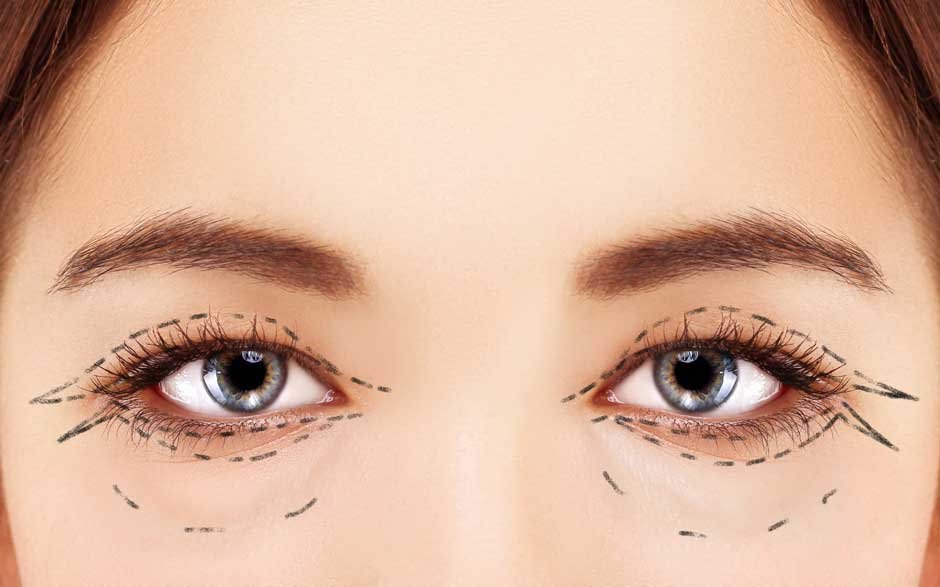Are you considering eyelid surgery to improve the appearance of your eyes? If so, you may wonder how long the procedure results will last. Eyelid surgery is a popular and effective way to reduce signs of aging around the eyes. Still, it’s important to understand the longevity of your results. In this blog post, we’ll explore how long eyelid surgery results can last and what you can do to maintain them.
The type of incision made.
The incision made during eyelid surgery, also known as blepharoplasty, is typically inconspicuous and follows the natural contour of the eyelid. Depending on the desired outcome, several types of incisions can be made.
The most common type of incision is an upper and lower lid crease incision, where a line is created in the natural creases of the upper and lower eyelids. It allows for excess skin and fat to be removed and helps with creating a smoother appearance. Another option is a transconjunctival incision, which is performed on the lower eyelids and can help address droopy eyelids without making any cuts on the outside.
Lastly, a direct skin excision can be used when more significant removal of skin and fat is necessary. This incision is usually reserved for more severe cases where more skin and fat must be removed.
The skin quality
It is one of the most important factors in determining how long the results of eyelid surgery will last, and the quality of the skin is one of the most important factors. Compared to skin that is elastic and firm, thick, sagging, and lax skin will not hold up well over time compared to thin, sagging, and lax skin. When evaluating the skin quality before proceeding with the surgery, the surgeon will take into account the patient’s age, lifestyle, and genetics, as well as the patient’s medical history.
If a patient has thin or delicate skin, their results may not last as long as those with thicker, firmer skin. To further improve the treatment results, additional procedures may be recommended, such as dermal fillers or laser resurfacing.
The amount of skin removed.
The amount of skin needing to be removed during eyelid surgery depends on the patient. Depending on the patient’s specific needs and desired outcome, the surgeon may need to remove some or all of the excess skin. In some cases, it is possible to remove just a small amount of skin to improve the appearance of the eyelids. In contrast, in other cases, the entire layer of skin may need to be removed. In general, the amount of skin removed during an eyelid surgery will depend on how much is needed to achieve the desired look.
In addition, the amount of skin removed can affect the length of time the surgery results last. More skin removal will often result in longer-lasting results, as more sagging skin has been removed from the eyelids. However, too much skin removal can lead to a less desirable outcome. Therefore, patients must discuss their desired results with their surgeon and decide on an appropriate amount of skin removal together.
The elasticity of the skin
The skin’s elasticity is important in determining how long your eyelid surgery results will last. The more elastic the skin, the longer the results of eyelid surgery may last. In some cases, patients with good skin elasticity may not need further eyelid surgeries for several years, if ever. However, more frequent eyelid surgeries may be needed when skin elasticity is poor to maintain desired results.
You must discuss the quality of your skin and its elasticity with your plastic surgeon if you are considering eyelid surgery. Depending on the severity of your case, they may be able to determine the best treatment plan for you.
How the surgery is performed
Eyelid surgery, or blepharoplasty, is typically performed under local anesthesia with sedation. During the procedure, incisions are made along the eyelids’ natural creases to remove excess skin and fat. The amount of skin and fat removed will depend on the individual’s needs. For example, suppose the goal is to reduce the appearance of wrinkles. In that case, less skin may be removed than if the goal is to reposition sagging eyelids.
Once the necessary amount of skin and fat has been removed, the incision is closed using absorbable sutures. Depending on the individual’s anatomy and desired outcome, the surgeon may also use special sutures and surgical glue to create a smoother, more natural-looking result.
It is recommended that a dressing be applied after surgery is complete to protect the area and minimize swelling and bruising. Most patients can resume their normal activities within one or two weeks of the procedure. There is, however, a possibility that full results will not be visible for several weeks after the treatment.


Comments are closed.